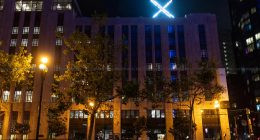The launch of a cargo ship, owned by private sector partner to NASA, SpaceX, had been fraught with delays and complications from its scheduled date last year in December. However, it was ‘all systems go’ in Florida, Space Launch Complex 40 at 4:47 a.m. EST for the SpaceX mission, which was aiming to create history today.
Dragon is a partially reusable spacecraft, SpaceX developed. It was launched into space with a help of Falcon9, a two stage-to-orbit vehicle launcher. The company is contracted to deliver cargo to the International Space Station under NASA’s Commercial Resupply Services program. This launch was carrying more than two tons of supplies and 250 NASA science investigations, ISS bound.
Where is the to-be-made history, you ask? Falcon9’s job is to get Dragon to the ISS crew. That’s not all, though. SpaceX had planned to control landing the first stage of the rocket on an autonomous spaceport drone ship, off the Florida coast. This is important because it marks a significant point in rocket reusable technology. 14 stories high, the first stage didn’t land as planned.
After Dragon and second stage of the Falcon 9 had separated off, to boost into low-Earth orbit, the first stage descended toward the Atlantic. Usually, the booster splashes into the ocean and is not used again- talk about financial and scientific wastage. The section made it to the place it was supposed to land, but it landed too hard. Two prior Falcon9 boosters have gone through these phases, but the final stage always failed- the boosters tipped sideways and crashed into the ocean, causing damage that made them unusable.
Elon Musk tweeted-
Rocket made it to drone spaceport ship, but landed hard. Close, but no cigar this time. Bodes well for the future though.
Rocket scientists had expected this to happen though, so they were not too disappointed. Although Elon Musk had given the landing a 50-50 chance of success, he later said- “I pretty much made that up. I have no idea :)”
Today’s launch not only resupplies the station, but also delivers important science experiments and increases the station’s unique capabilities as a platform for Earth science with delivery of the Cloud-Aerosol Transport System, or CATS instrument.
The CATS instrument measures the location, composition and distribution of pollution, dust, smoke, aerosols and other particulates in the atmosphere. CATS will be attached outside the station on the Japanese Experiment Module. By gaining a deeper understanding of cloud and aerosol coverage, scientists can create a better model of their role in Earth’s changing global climate.
A new biological study will use flatworms as a model organism to see how gravity affects tissue regeneration and the rebuilding of damaged organs and nerves. Flatworms regenerate their cells, replacing them as they age or are damaged. This investigation studies the cell signaling mechanisms the worms use while regenerating their tissue in microgravity. Its results could provide insight into how wounds heal in space.
Also making the trip as model organisms will be fruit flies (Drosophila melanogaster). Scientists will study the flies’ immune systems as a model for the human immune system, to explore how spaceflight can make organisms more susceptible to disease, especially since microbes can become more virulent in space.






